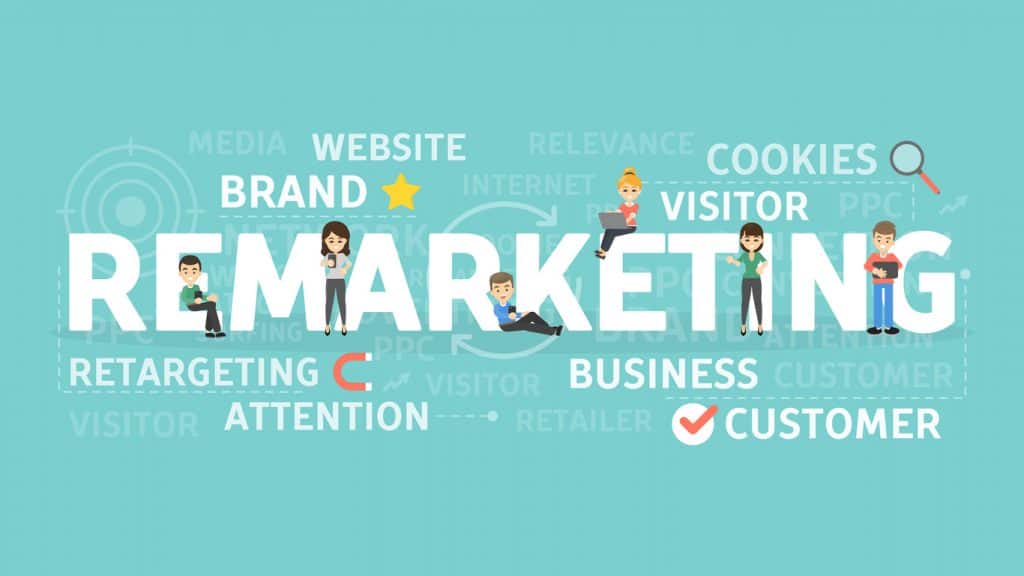In a previous blog post, we went over the basics of content optimization – what…

Four Fantastic Ways to Use Remarketing For Your Ecommerce Site
Remarketing is a powerful strategy shaking up the way online retailers sell products to consumers. Most online shoppers have already experienced this technique firsthand, but many don’t know what it is. Here are two examples:
- Bill, a 32-year-old Wall Street executive, finds a designer suit jacket on sale at an online retailer. He adds it to a shopping cart but doesn’t purchase it immediately. Instead, Bill decides to check his Facebook notifications and respond to emails. Strangely, the businessman notices that every site he visits displays retail ads featuring the jacket he considered purchasing. He decides to buy it.
- Next, April, a teenager, finds a bestselling game at an internet store. She wants to purchase the game, but it costs more than she’s willing to pay. April adds the game to her wishlist and leaves the website to visit a gaming forum. She notices a banner ad from the retailer’s competitor on the site. They’re offering the item at a reduced price and free shipping. It’s a great deal. April clicks the banner and purchases the item from the competition.
These are two common examples of remarketing, but how can it help your company? Today, we’ll walk you through some remarketing basics and techniques to boost business revenues.
What is Remarketing?
Remarketing can be one of the strongest digital marketing methods. This behavioral advertising technique targets people that are already interested in your products and tries to convert them to customers.
The method is simple. A company’s website places a cookie into a visitor’s browser when they visit the website. Audiences can be created utilizing information based on how the user interacted with the website to serve them the most relevant ads to try to recapture their business.
What Can Remarketing Accomplish?
- It reminds customers to complete online purchases.
- Remarketing helps improve conversion rates.
- The technique is great for audience targeting. It uses behavioral segmentation, and only places tags into a browser if users complete a certain subset of actions.
Five Remarketing Approaches
There are different types of remarketing strategies that marketers can use.
- Standard – Targets individuals that have visited your site but left without becoming sales or leads.
- Retargeting – Zeros in on individuals who went to a competitor’s website. They can become sales leads.
- In-Market – This approach identifies shoppers who’ve searched for items similar to ones you sell.
- Affinity Targeting – This method factors in consumers ongoing interests and content they engage with most online.
- Video Remarketing – Uses advertisements on video platforms like YouTube.
How to Get Started with Remarketing
More than 97 percent of online purchases are not completed by consumers according to SAP Hybris Marketing Convert. How can businesses turn website traffic into leads and sales?
Remarketing helps improve online conversion rates. The method is excellent for audience targeting. It helps turn web traffic into customers advertising using Calls to Action (CTA). The CTAs encourage your audience to purchase your products. You can display ads on social media sites, forums, videos, and search engine results pages (SERPs).
How To Target Your Audience
Should you show advertisements to every customer that’s visited your site? While it sounds promising, the answer is no. This approach would be vague and ineffective, and your metrics and data would match.
You’ll need to take a targeted approach and only create advertisements for people who did not complete a purchase on your site.
- Step One: Analyze the behaviors of consumers. You’ll use Google Analytics to learn their habits. You’ll find out which web pages received the most views, and where visitors went after leaving the page.
- Step Two: Make separate outlines for each behavior set. You can use a Remarketing Grid broken into three areas by behavior: Interested, Not Interested, Buyers/Conversions.
- Step Three: Create remarketing lists aimed at specific groups. (They can be for your highest-priority pages or largest sales categories. When individuals visit your site, it will add a cookie.
- Step Four: Use targeted advertisements toward these different groups.
Remarketing Strategies
Here are four remarketing strategies based on four common shopping scenarios.
1. Shopping Cart Abandonment
Around 75 percent of customers abandon their shopping carts before making a purchase.
First, pinpoint potential customers who failed to purchase their items from your store and find out why your customers decided not to complete their purchase. Was it due to the pricing or high shipping costs? Offer a discounted rate or free shipping to lure them back.
Then, create separate advertisements based on customers’ behavior. Limit ad impressions/views per day.
Then, use this remarketing formula created by Sean Dolan from Raven Tools. You’ll use the list definition tool in Google AdWords:
- Create “Negative/Positive” subsets based on consumer’s actions. Negative are sets of actions where a cookie is not deposited into a website’s browser if they complete a purchase on your site. You’ll use the positive subset of individuals that purchase items.
- Set an expiration deadline for your cookies. (In AdWords, the expiration date can extend to 18 months).
- Create rulesets in Google’s Adwords based on individual behavior.
Only create a cookie (with an expiration date) for people who abandon items in their shopping carts. Don’t create ones for individuals that complete their purchases.
2. Product-Based Abandonment
You can also create retargeting campaigns based on individual items. For example, what if customers visit a specific page for a pair of shoes? The person adds the shoes to their shopping cart. Yet, the person fails to purchase the item?
You’ll need to create cookie rulesets based on this behavior. The first cookie will indicate if a person visited a specific page, the next rule will indicate that the person placed the item in their shopping cart. A cookie will be deposited if the purchase is not completed.
In the “List Definition” area of Google AdWords, create a combination of actions (for individuals that visit a page and add it to their shopping carts). Instead of offering discounts or free shipping, you can show the specific item on different websites.
3. Anniversary and Seasonal Reminders
If your cookies have an 18-month expiration date, you can use them to create advertisements based on seasonal events and upcoming anniversaries. You’ll create four-rules in Google AdWords. Your approach will differ from the main tag you’ve used for other remarketing campaigns.
For anniversaries, create four conditions in Google AdWords. For example, customers must visit a seasonal page and add something to their shopping cart. Visitors will be reminded to complete their purchases. Set the cookies to expire in 370 days.
Two cookies will be deposited for purchased items pages, one set to expire in 360 days, the other in 370 days. When customers purchase items, the second cookie (that expires in 370) will be used. It will appear five days before the date of the previous anniversary purchase. It will remind them of the upcoming date.
3. Remarketing Using Social Media
Another viable remarketing platform is social media. You can advertise on sites like Twitter, Facebook, Google, or Google Plus. Have a programmer create a specialized script for this task.
Ask your developer to create an if-then statement. If a condition is true, then the Javascript will deposit a cookie in their browser. For example, if a customer abandons items in their shopping cart, then visits Twitter, a specialized ad featuring the item will display on that platform.
Your company can create different remarketing tags for specific social media sites.
4. Emails for Inactive Customers
Email Remarketing campaigns can attract users back to a website. You’ll use the information you’ve collected about the customer to send individual emails reminding them to purchase items. You can use the following remarketing campaigns: Order Follow Ups, Abandoned Cart Recovery, Rewards/Loyalty Programs, and Inactive Customer Follow-Ups.
Make sure that your emails are simple. People don’t like long emails. Have clear Calls-to-Action and provide incentives.
Don’t spam. Don’t email customers without a purpose or use complex designs in your communications.
Metrics to Track Remarketing Success
There are five metrics to use to measure the success of your Remarketing campaign.
- Cost Per Click (CPC): Find out the actual price that you’re paying per click in your marketing campaigns. Calculate it using the following formula: Competitor AdRank / YourQuality Score + .01 = Actual CPC.
- Click Through Rate (CTR): A high click-through rate means a large number of people have engaged with your ads and subsequently seen the items on your website. How it’s calculated: Total Clicks on Ads / Total Impressions = CTR.
- Cost Per Acquisition (CPA): The average marketing and sales costs for new customers. Formula: Marketing Costs and Sales Costs / Revenue from New Customers = CPA.
- Effective Cost Per Mil (eCPM): This will show you how much your ads brought you in revenues: Formula: Total Earnings / Impressions x 1000 = eCPM.
- Return on Investment (ROI): Net Profit / Total Investment * 100 = ROI.
If this feels overwhelming, please reach out to our remarketing experts at SocialSEO. We’ll help you put together a remarketing strategy that will strengthen your digital advertising efforts.




